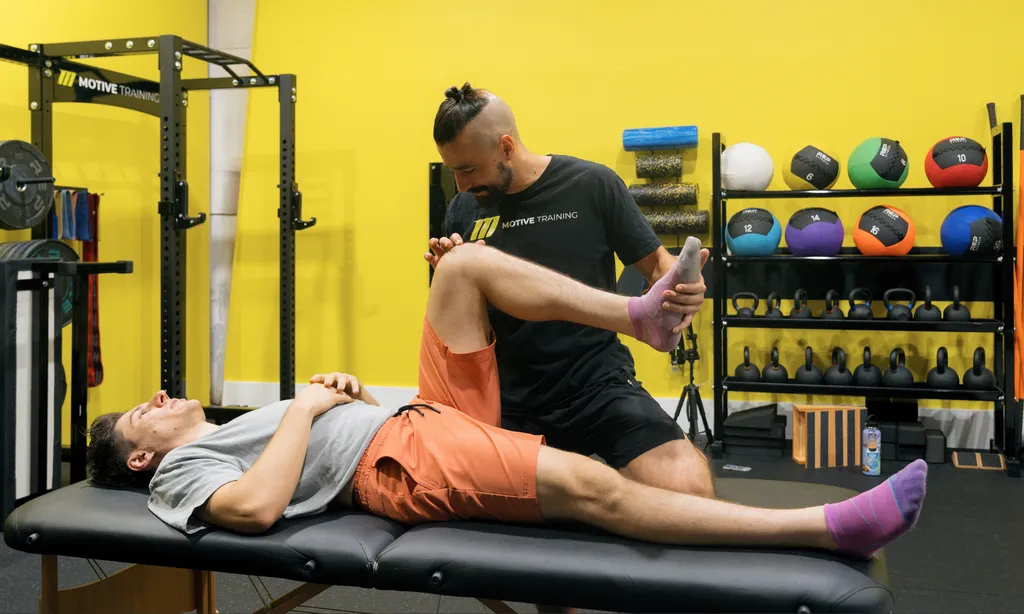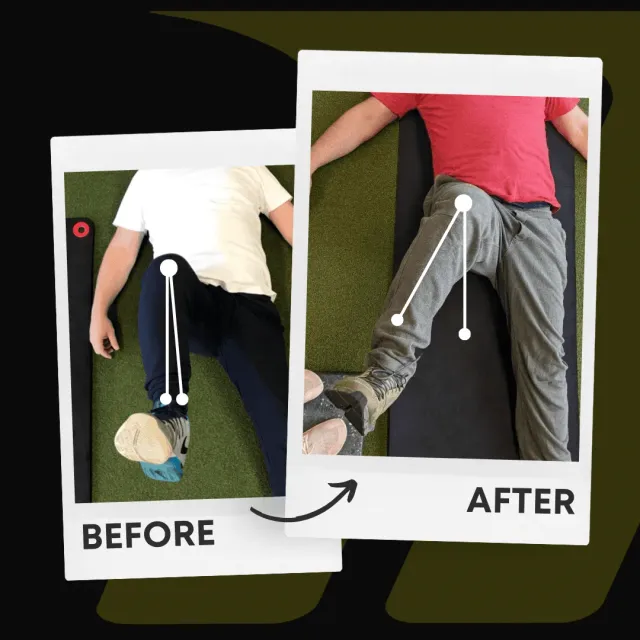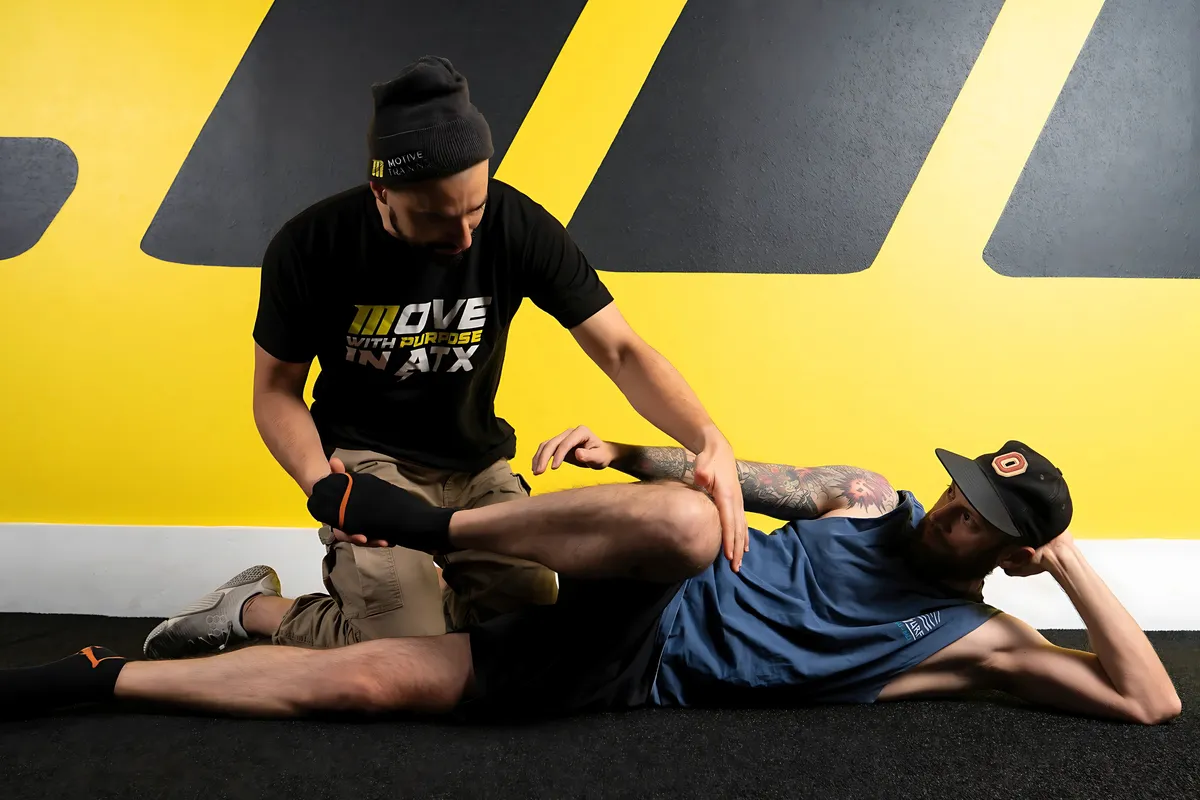Should You Do The Functional Range Assessment?
May 24, 2023 | Functional Range Assessment

The personal training industry has hundreds of training methods and modalities. If you become a personal trainer, you can branch off and coach people in all sorts of directions. For instance, you can coach athletics and sports, weight loss, mobility, powerlifting, Olympic lifting, and the list goes on from there. Similarly, a personal trainer will use all sorts of assessments and movement screens to see how their clients move. There’s the Functional Movement Screen (FMS), the Selective Functional Movement Assessment (SFMA), and more. However, nothing compares to the Functional Range Assessment (FRA).
The FRA is an innovative system that helps individuals optimize their movement capabilities and prevent injuries. This comprehensive guide will delve into the principles and benefits of FRA, how it can improve your overall health and well-being, and how you can incorporate it into your daily life. By understanding and applying the principles of the FRA, you can unlock your body’s full potential and enjoy a life filled with greater mobility, flexibility, and reduced risk of injury. Baseline measurements are crucial in the FRA process as they provide objective and precise assessments of an individual’s movement capabilities, allowing for tailored training programs to address specific deficits.
What is the Functional Range Assessment? The Functional Range Assessment (FRA) is a scientific approach to evaluating an individual’s joint health and movement capabilities. Developed by Dr. Andreo Spina, the FRA aims to identify areas of joint dysfunction, limitations in range of motion, and potential for injury. It’s important to note that the FRA should be conducted by a qualified professional, such as a medical doctor, physical therapist, or certified FRA practitioner. By assessing an individual’s joint capacity, the FRA system can provide targeted recommendations to restore proper joint function, optimize movement, and mitigate future injuries.
What Is The Functional Range Assessment?
Definition And Overview
The Functional Range Assessment (FRA) is a cutting-edge, measurement-based assessment system designed to evaluate an individual’s movement capacity and joint health. Unlike traditional methods that often rely on subjective observations, the FRA provides precise and objective measures of a person’s range of motion, strength, and neurological control. This comprehensive approach allows for a detailed understanding of an individual’s functional anatomy, making it an invaluable tool for medical doctors, physical therapists, and trainers. By identifying specific deficits in movement capacity, the FRA enables the development of targeted training inputs to improve mobility and reduce pain. Whether you’re dealing with chronic pain or simply looking to enhance your physical performance, the FRA offers a precise and effective way to assess and address your joint health.
The Principles Of The FRA
The FRA is based on the principles of joint health, functional movement, and injury prevention. The primary goals of the FRA are to:
-
Assess an individual’s joint function and movement capabilities.
-
Identify any limitations or restrictions in joint mobility. The FRA targets an individual’s specific deficits to improve joint function and movement quality.
Develop targeted interventions to improve joint function and movement quality. These interventions could include specific exercises to improve joint mobility, strength training to enhance stability, and mobility drills to improve motor control. Monitor progress and adjust interventions as needed to ensure optimal outcomes. This ongoing monitoring is crucial as it allows for adjustments based on the individual’s progress and changing needs, ensuring that the interventions remain effective and the individual continues to improve. These principles are applied systematically to assessment, intervention, and ongoing monitoring.
The Components Of The Functional Range Assessment
A comprehensive FRA consists of several components, including:
-
Joint-by-joint assessment. The FRA is not just about looking at your squat; it’s about evaluating the mobility, stability, and motor control of each joint in your body. This comprehensive approach ensures that we’ll see how you move joints like your ankles, toes, wrists, and more. Additionally, soft tissue assessment is included as part of the comprehensive evaluation process.Passive and active range of motion testing. This includes measuring your ability to move your joints through their full range of motion, both passively (with assistance) and actively (without assistance).
-
Isometric strength testing (if needed). Assessing your ability to generate force in specific joint positions.
-
Controlled Articular Rotations (CARs) analysis. Finally, we’ll look at how your joints move through their greatest range of motion possible. Below is an example of what CARs look like.
By combining these components, the FRA system can provide a comprehensive and individualized picture of your joint health and movement capabilities, ensuring that your unique needs are addressed.
The Science Behind The Functional Range Assessment
Understanding Functional Anatomy And Range of Motion
The Functional Range Assessment is deeply rooted in the principles of functional anatomy, which focuses on how the body moves and functions as an integrated system. During an FRA, the range of motion of each joint is meticulously evaluated, considering the complex interactions between bones, muscles, and the nervous system. This thorough analysis of movement patterns and joint limitations provides a detailed picture of an individual’s functional range. By understanding these intricate relationships, the FRA can pinpoint areas that require improvement, allowing for more effective interventions. This scientific approach ensures that each assessment is comprehensive and tailored to the individual’s unique needs, promoting better joint health and overall movement capacity.
The Benefits Of Functional Range Assessment
Improved Joint Health
One of the primary benefits of the FRA is improving joint health. By identifying areas of joint dysfunction and implementing targeted interventions, we can restore proper joint function and prevent the development of chronic pain or injury. Functional Range Release (FR) is an advanced technique used to enhance joint range of motion and strength. This is particularly important for those who engage in regular physical activity or have a history of joint pain, as maintaining optimal joint health is crucial for long-term well-being.
Enhanced Performance
The FRA can also help improve athletic performance by optimizing movement patterns. By identifying any limitations or compensations in functional movement, targeted interventions can be developed to address these issues, improving efficiency and effectiveness during physical activity. Functional Range Conditioning (FRC) systematically enhances mobility, articular control, and strength. This can result in increased strength, power, endurance, and a reduced risk of injury.
Injury Prevention
One of the main goals of the FRA is to identify potential areas of injury risk and implement interventions to prevent injuries from occurring. By assessing an individual’s joint health and movement capabilities, the FRA can help identify areas of weakness, tightness, or instability that may contribute to injury. By addressing these issues through targeted interventions, individuals can reduce their risk of injury and maintain a high level of physical activity.
Personalized Interventions
The FRA provides a personalized approach to improving joint health and movement capabilities. By assessing an individual’s unique movement patterns and joint function, the FRA can develop targeted interventions specific to their needs. This allows for a more efficient and effective approach to improving joint health, unlike generic exercise programs that may not address an individual’s specific limitations or restrictions.
Limitations Of Traditional Assessments
The Problem With Subjective Methods
Traditional assessments often fall short due to their reliance on subjective methods, such as visual observation and manual testing. These approaches can be prone to error and bias, leading to inconsistent and sometimes inaccurate results. In contrast, the Functional Range Assessment employs a standardized, measurement-based approach to evaluate movement capacity, effectively eliminating guesswork. By using objective measures, the FRA provides a more accurate and reliable picture of an individual’s joint health. This precision is crucial for developing treatment and training programs that are specifically tailored to an individual’s needs rather than relying on broad assumptions or generalizations. For those dealing with chronic pain or significant movement limitations, this targeted approach can make a substantial difference in improving mobility and reducing pain, ensuring that each intervention is as effective as possible.
Incorporating The Functional Range Assessment Into Your Routine
Find A Qualified Professional
The first step in incorporating the FRA into your routine is to find a qualified professional certified in Functional Range Assessment. At Motive Training, multiple personal trainers are certified to do the FRA. Attending functional anatomy seminars is crucial for professionals to enhance their understanding of client movement capacities and assessment techniques. If you’re not local to Austin, TX, we recommend using the FRC directory to find an FRA professional.
Schedule Your Assessment
Once you have found a qualified FRA professional, schedule an initial assessment to evaluate your joint health and movement capabilities. The FRA typically runs for two hours because it’s thorough, and we don’t want to cut corners on your health. So, prepare ahead of time for a long but informative session with us or another FRA provider. A medical doctor will evaluate various health markers during the FRA process.
Implement Targeted Interventions
Following your assessment, your FRA professional will develop a personalized intervention plan. This may include targeted mobility exercises, strength training, motor control drills, or other interventions to improve joint function and movement quality.
Monitor Progress And Adjust As Needed
As you work through your personalized intervention plan, monitoring your progress and making adjustments as needed is essential. Your FRA professional can provide ongoing assessments to ensure that your interventions are effective and modify your plan as necessary to ensure optimal outcomes. The FRA eliminates guesswork by providing precise data on movement capacity, ensuring that training inputs are tailored to individual deficits. For instance, our staff at Motive Training often records videos or takes pictures of ranges of motion to see how things are changing. You can view some of those testimonials here.
Additional Tips For Optimizing Your Functional Range Assessment Experience
-
Be patient. Improving joint health and movement capabilities takes time and consistent effort. So, stick with your intervention plan and trust the process.
-
Communicate with your FRA professional. Keep your FRA professional informed of any changes in your symptoms, progress, or concerns. They can help adjust your plan as needed to ensure the best possible outcomes.
-
Practice good self-care. In addition to your FRA interventions, prioritize sleep, nutrition, and stress management to support overall health and well-being.
-
Stay consistent. Regularly incorporate your FRA interventions into your routine to maintain and improve joint health and movement capabilities.
We’ve been doing FRAs for four years now, and it’s an invaluable tool for optimizing joint health, enhancing performance, and mitigating injury. Don’t go through the rigamarole of doing pointless movement screens or assessments that aren’t based on science. Book your first FRA today and never look back.
Written by
Brian Murray, FRA, FRSC
Founder of Motive Training
We’ll teach you how to move with purpose so you can lead a healthy, strong, and pain-free life. Our headquarters are in Austin, TX, but you can work with us online by signing up for KINSTRETCH Online or digging deep into one of our Motive Mobility Blueprints.

